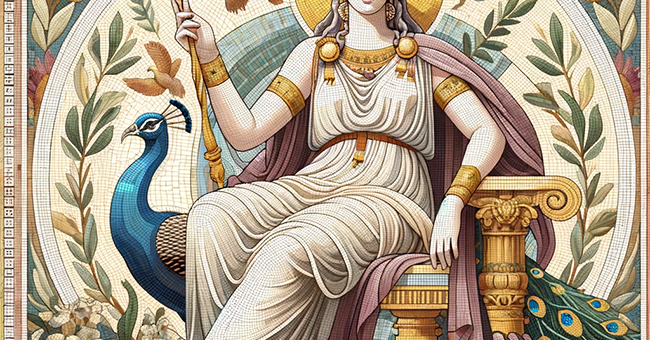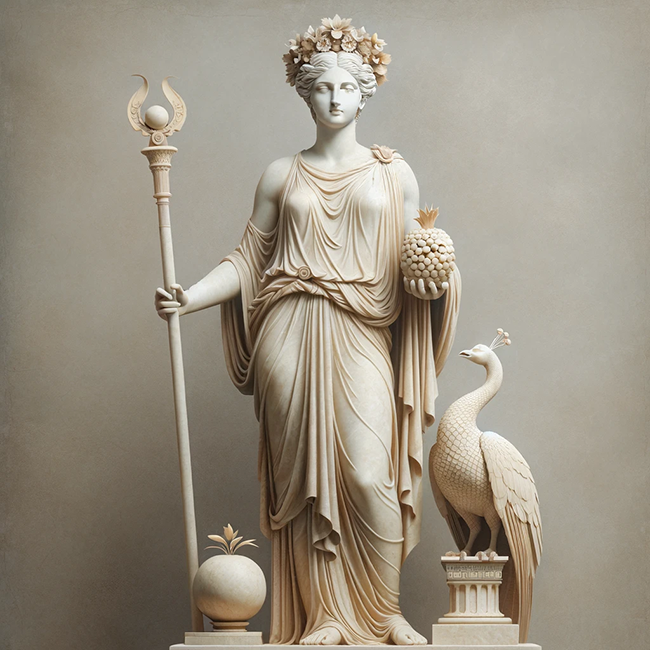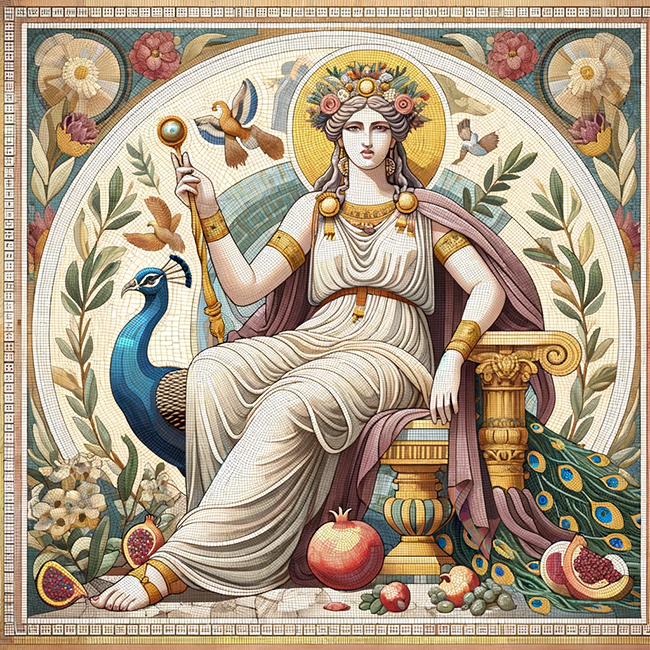
Hera, the Greek goddess of marriage, women, childbirth, and family, was one of the most important and widely worshipped deities in ancient Greek religion.
She was revered across the Greek world, and her worship included various practices, rituals, and ceremonies, reflecting her status and the aspects of life she presided over.
Temples and Sanctuaries
Hera had numerous temples and sanctuaries dedicated to her across Greece.
The most famous was the Heraion of Samos, an ancient sanctuary on the island of Samos, her reputed birthplace.
Another significant temple was the Heraion of Argos in the Peloponnese, considered one of the most important religious centers in ancient Greece.
These temples served as centers of worship and pilgrimage sites.

Festivals
Various festivals were held in honor of Hera, which included both public ceremonies and private rites.
The Heraia, celebrated in several cities, was one of the oldest and most important festivals dedicated to Hera. It often included athletic competitions for women, paralleling the male-only Olympic Games.
The Gamelia was a festival celebrating marriage and was associated with Hera’s role as the goddess of matrimonial union. This festival involved rituals that symbolized the sanctity of marriage.
Rituals and Sacrifices
Rituals and sacrifices were central to Hera’s worship, with offerings made to seek her favor or appease her.
These could include animal sacrifices, typically cows or heifers, which were considered sacred to Hera.
Offerings of incense, food, and libations were also common.
Marriage ceremonies in ancient Greece often invoked Hera’s blessing. Couples would offer sacrifices to Hera to ensure a harmonious and fertile union.

Iconography and Votives
Hera was often depicted in art and literature as a majestic, matronly figure, usually seated on a throne and sometimes holding a scepter, pomegranate (a symbol of fertility), or a peacock (her sacred animal).
Votive offerings, including statues, reliefs, and other dedications, were made in her temples by worshippers seeking her favor or thanking her for her blessings. These offerings could also include personal items or symbols related to marriage and childbirth.
Priesthood
The priesthood of Hera included both men and women, who served various functions within her temples and sanctuaries.
Priests and priestesses played a crucial role in conducting rituals, managing the temple precincts, and organizing festivals in her honor.

